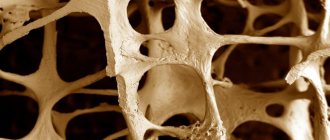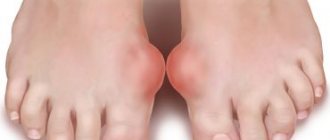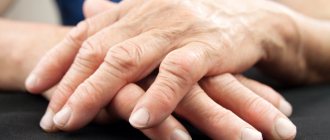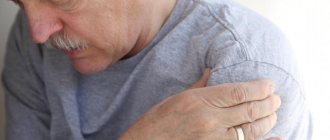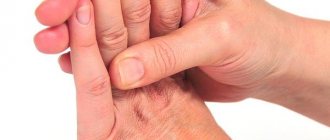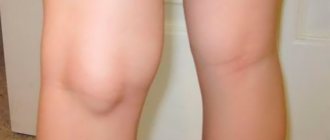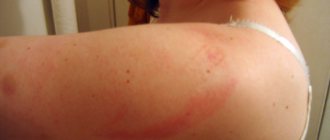Injuries to the hand can be different, both in location and in the nature of the damage. They arise in everyday life, during sports and professional activities. Injuries to the hands can lead to structural changes in tissue, including sprains and fractures. Therefore, immediately after injury, it is recommended to contact a traumatologist who will prescribe an X-ray examination and other diagnostic methods to make an accurate diagnosis and assess the extent of damage to the limb.
At the CONSTANTA Clinic, qualified specialists in the field of traumatology with extensive practical experience are always ready to receive you. Even if it seems to you that the hand injury is minor and you can get by with home treatment, you should not take risks - it is better to visit a doctor who will conduct an examination and assess the extent of the damage. Our Clinic is considered one of the best in Yaroslavl, as we have innovative equipment that is actively used for the diagnosis and treatment of diseases. Competent employees are always ready to discuss questions of interest to the patient and provide qualified medical care within the framework of a specific clinical case.
Classification
According to the place of injury, bruises are distinguished:
- industrial (when struck with heavy tools);
- household;
- sports.
Bruises are classified according to location:
- wrists;
- fingers;
- palms;
- wrist joint.
According to the severity of bruises there are:
- lungs (slight redness of the skin at the site of injury is detected);
- medium (subcutaneous hemorrhages are visualized, soft tissues swell);
- severe (severe swelling and extensive hematomas).
The severity of bruises correlates with the severity of pain. Severe bruises are characterized by causalgia - pain of high intensity, radiating to the forearm and shoulder. The range of motion with causalgia may be limited.
Characteristic symptoms
A bruise to the hand caused by a blow or fall leads to the development of various manifestations. At the moment of injury, pain appears, the intensity of which depends on the direction, strength, and speed at which the person falls. With minor injuries, the pain syndrome may be insignificant, but with serious injuries, severe pain appears. This is explained by the fact that the hands are equipped with a large number of nerve endings.
As a rule, the pain becomes weaker over time, but intensifies when swelling appears. Intercellular fluid accumulates in the deep layers of the dermis and causes pain with a bursting effect. The degree of swelling can vary, from mild swelling to swelling that deforms the hand, depriving it of mobility.
Shallow scratches or abrasions are often observed on the skin, and hematomas may form under the skin. When a bruise occurs, bruises occur in the form of single bruises or extensive deep hemorrhages that cover the entire hand and appear gradually, changing color from purple to yellow.
Mechanical impact on large nerves causes neurological disorders:
- numbness of fingers;
- sensory disturbance;
- burning, tingling on the skin;
- irradiation of pain in the forearm.
For uncomplicated injuries, the pain goes away quickly and the swelling disappears within a few days. Difficulty in movement during the acute period is accompanied by pain, but subsequently quickly recovers.
Symptoms
Common signs of this type of injury include:
- pain in the hand, often radiating to the forearm or fingers (with severe injuries);
- subcutaneous hemorrhages (appear after 2-3 hours) and hematomas;
- pain when performing movements (it can be difficult to clench your fingers into a fist);
- swelling;
- a feeling of numbness accompanied by a decrease in various types of sensitivity;
- hyperemia (redness) of the skin.
With hemorrhages in the subcutaneous fat, the phenomenon of “bruise bloom” is characteristic, in which the cherry color turns blue-green and then yellow after four to five days (due to the metabolism of iron-containing blood pyment).
With severe bruising, hematomas localized on the dorsal surface of the hand, in some cases reach significant sizes. The skin at the site may turn blue. Sometimes the skin peels off, forming blisters with hemorrhagic contents.
Severe pain can provoke a sharp decrease in blood pressure, the development of syncope or traumatic shock.
Short description
A hand bruise is a closed injury that affects soft tissue. Damage to the deep layers of the dermis leads to a violation of the integrity of capillaries and small vessels, which leads to hematomas. Abrasions and scratches may appear on the skin, and occasionally open wounds.
There are four degrees:
- A mild degree is accompanied by minor damage to the epidermis, the hand swells slightly, and the pain is tolerable. The condition does not require specific treatment and goes away on its own after a few days.
- The second degree is characterized by rupture of muscle fibers, which leads to the formation of subcutaneous hemorrhage and severe pain.
- The third type is diagnosed when the injury involves tendons and ligaments, and in some cases can be complicated by dislocation.
- The fourth degree of injury is the most severe. The injury may be accompanied by damage to bone areas, bleeding, and threaten the general condition of the victim. The terminal stage is treated in a hospital under the supervision of medical specialists.
Emergency care and how to bandage a joint
If a bruise is suspected, immediate (within 15 minutes) application of a cold compress to the damaged area is indicated.
Ice placed in a plastic bag and wrapped in cloth works best.
Next, the bruise site is washed with cold water, after which a bandage is applied, then until contacting a traumatologist to verify the diagnosis, the arm must be kept in an elevated position.
To reduce swelling, internal bleeding and immobilize the hand, it is bandaged. Possible dressing options:
- mitten;
- on the hand and wrist (without gripping the fingers);
- on the hand and finger;
- on the hand and fingers like a glove.
When applying a bandage, remember that at least two joints are subject to immobilization. It is permissible to use a Kramer splint or improvised means. In this case, the splint components should not come into contact with the skin to avoid irritation. To do this, they should first be wrapped in a bandage.
In case of severe bruise, the time of wearing a fixing bandage can be 14 days.
Bruised wrist: Bruised palm
Traumatologists believe that most wrist injuries are associated with hand bruises. Other symptoms of a wrist injury include:
- very sharp pain in the injured area, reaching to the fingers;
- spasm - a feeling of tightness;
- convulsions may occur.
Such injuries are very dangerous if not treated correctly and can lead to difficult-to-treat trophic changes (microcirculation disorders) and dystrophic changes in the bones of the wrist.
A severe bruise to the wrist can make the victim feel worse. Nausea, dizziness and fainting are not an exhaustive list of possible side effects. It is worth noting that general malaise may indicate a wrist fracture.
How to develop a hand
On the third day after the injury, in order to avoid wasting of the hand muscles, it is recommended to begin performing the following exercises:
- put your hand on the table and drum your fingers on its surface;
- fold your palms, swinging them like a metronome;
- place your palm on the table, pressing your fingers to the surface (the exercise involves trying to lift them up);
- gently squeeze the expander or ball with the fingers of the injured hand;
- take two balls in your palm and rotate them in your hand clockwise and counterclockwise. Ideally they should not collide.
Under no circumstances should you make sudden movements or perform exercises while overcoming pain.
It is advisable to prescribe a massage or self-massage of the hand, which involves lightly massaging the injured hand from the distal phalanges of the fingers to the proximal parts of the hand.
A severe bruise of the hand can also be treated through acupuncture sessions.
Rehabilitation after hand injuries
Rehabilitation is a mandatory stage in the treatment of hand injuries. Rehabilitation measures may include physiotherapeutic techniques, massage, spa therapy, physical therapy, warming compresses, and the use of medicinal ointments. The patient’s motor activity and quality of life in the future depend on the effectiveness of rehabilitation. It is forbidden to subject the hand to increased physical stress in the first months after the end of treatment.
In our Clinic in Yaroslavl you will receive the necessary assistance with hand injuries of any complexity. We are ready to answer all your questions and provide high-quality information support.
If you have any questions or make an appointment with a specialist, please call: (4852) 37-00-85 Daily from 8:00 to 20:00
Sign up for a consultation
What can be done at home in different cases
If a fracture is excluded, treatment can be carried out on an outpatient basis under the supervision of the attending physician.
In the first 24 hours after injury (the sooner the better), dry cold should be applied to the damaged area for no more than 10 minutes every 2 hours. Pain-relieving ointments can be applied locally. After 72-96 hours, heat can be applied to speed up the resolution of the bruise.
© khunkorn — stock.adobe.com
Warming can be done using:
- bags of heated salt (dry heat);
- paraffin applications;
- warm baths.
For severe pain, NSAIDs (Ketotifen, Diclofenac sodium, Ibuprofen) are prescribed orally, and NSAID-based ointments (Fastum gel) are prescribed topically, which are applied 1-3 times a day.
To relieve severe pain, narcotic analgesics (Promedol, Omnopon) are used by prescription and under the supervision of a physician.
For severe edema, vitamin C, Rutin, Ascorutin, Quercetin, Troxevasin, Actovegin, Aescusan, Pentoxifylline are used to strengthen the walls of capillaries and improve microcirculation.
Physiotherapeutic methods can be prescribed from the third day after the injury and include:
- UHF currents;
- action by a low-frequency magnetic field;
- Ural Federal District;
- laser therapy.
If there are signs of compression of the branches of the ulnar or median nerves (the branches of the radial nerve are rarely compressed in cases of hand contusion), a blockade using anesthetics (Novocaine, Trimecaine) can be used to anesthetize the innervated areas. For the same purpose, electro- or phonophoresis with anesthetics and Bernard currents are used. Sometimes they resort to surgery.
In order to stimulate regeneration in the presence of damaged tissues, anabolic agents (substances that enhance protein synthesis) are prescribed:
- non-steroidal (Methyluracil);
- steroids (Methandrostenolone, Phenobolin).
Under the influence of anabolic steroids, soft tissues heal much faster. For the same purpose, the following can be used locally:
- biogenic stimulants based on aloe, rosehip, fir and sea buckthorn oils;
- ointments containing Actovegin and Solcoseryl;
- compresses based on a solution of Dimexide, Novocaine and ethanol.
To stimulate rapid resorption of hematomas under the supervision of a hirudotherapist, leeches can be used.
Diagnostics
The traumatologist determines the type of injury through questioning and examination of the patient, as well as using hardware diagnostic methods. A presumptive diagnosis is established based on external signs, complaints and details of injury. To exclude possible complications, the following is prescribed:
- radiography, which shows possible changes in the bone structure and excludes a fracture or crack;
- magnetic resonance imaging – to assess soft tissue damage.
Folk remedies
3-4 days after the injury, the following will help reduce pain:
- Warm sea salt baths (40 g of salt must be dissolved in 1 liter of water; lower your hand for 30 minutes).
- Camphor oil or alcohol tincture of wild rosemary - can be used topically 1-2 times a day.
- Ointment based on honey and aloe – aloe pulp and honey are taken in equal quantities.
- Local application of goose fat.
- Ointment based on egg yolk - raw yolk and 5 g of table salt are mixed, after which the mixture is applied to the skin 3-4 times a day.
- Dressing with Badyaga - freshwater sponge powder diluted in water in a ratio of one to two. The composition is applied to the damaged area. The dressing is changed twice a day.
- Compresses based on: Vegetable oil, edible vinegar (9%) and water - the ingredients are taken in equal volumes (in the first days a cold compress is used, starting from 3-4 days - a warm one).
- Alcohol tincture of horseradish (1:1 ratio with ethanol) – recommended application time is about 30 minutes.
- Crumpled cabbage leaf - the procedure is performed in the evening before bed.
- Slices of raw potatoes - applying a compress is also done at night.
Possible complications of a wrist injury
In case of injury to the wrist joint, the median and ulnar nerves may be damaged, which will lead to loss of sensitivity, impaired motor functions and trophic disorders (cellular nutrition disorders).
This type of injury is characterized by shooting pain in the fingers, then it becomes increasingly difficult to straighten them, and the hand becomes deformed. For treatment, the doctor will prescribe physiological procedures, drugs that restore vascular function, and the intake of B vitamins.
You may also experience the problem of nerve narrowing due to severe swelling. The only solution in this case is surgery.

